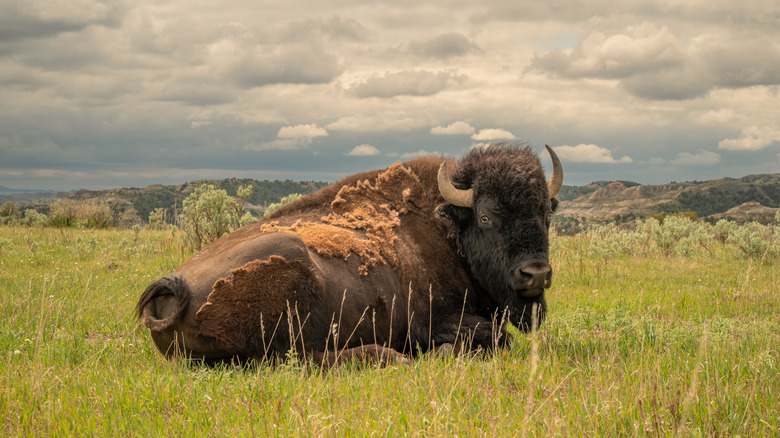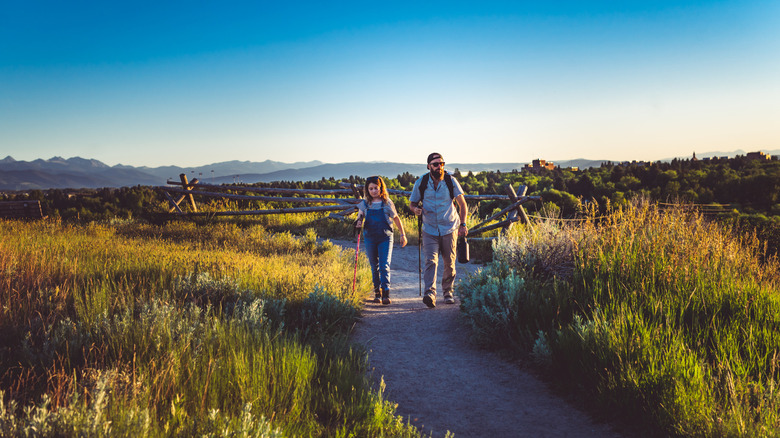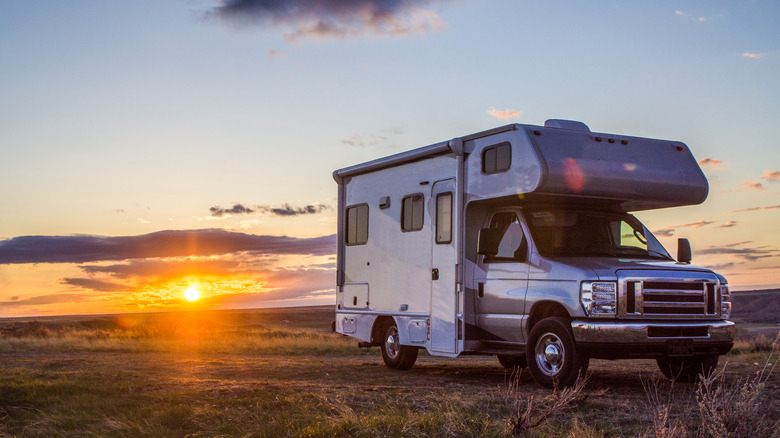Montana's Non-Profit Nature Preserve Offers Camping, Hiking, And Wildlife Viewing On Bison-Rich Prairies
Montana is a vast state and one of America's most rural, typified by the Rockies meandering down from British Columbia and great, sprawling plains with grazing cattle and Stetson-clad cowboys roaming in some places as though it were still 1876. This is Big Sky Country, where rustic resorts are hidden in nooks in the Rockies and even the cities are full of scenic trails and mountain charm. But perhaps one of the state's best travel experiences is visiting the American Prairie (formerly the American Prairie Reserve), a nonprofit wildlife conservation area in Montana's Northern Great Plains.
The reserve opened in 2004 and is still a work in progress. The goal is for it to sprawl across 3.2 million acres of private and public land, including diverse habitats like shortgrass prairie, sagebrush steppe, and river corridors. If achieved, it will become the largest wildlife preserve in the U.S. It's already home to populations of elk, deer, bison, and pronghorn, a horned, deer-like creature that has the distinction of being America's fastest land mammal. Additionally, the reserve hosts beavers, prairie dogs, red foxes, greater sage-grouse, snowy owls, and ferruginous hawks.
American Prairie's mission is to boost these populations and create a once-again thriving ecosystem, because many animal species have watched their habitats dwindle. Grassland bird populations have witnessed precipitous declines over the last half century — based on historical estimates, lekking sage grouse once numbered 16 million; now there are only 200,000 left. Similarly, the American Prairie website adds that black-tailed prairie dogs "occupy less than two percent of their historic habitat range in North America," and bison are now considered "ecologically extinct," meaning they're no longer crucial to shaping prairie biodiversity. Worryingly, temperate grasslands are one of the fastest disappearing, least protected biomes on earth.
What to see and do at American Prairie?
American Prairie-owned properties are free to visit, though signage and maps are available to indicate travel routes, off-limits areas (like protected habitats), points of interest, and safety tips. The American Prairie's National Discovery Center in Lewistown, an idyllic city in the midst of Montana's gorgeous mountain ranges, is a must for first-time visitors to the region. Here, you can learn more about what travelers get up to on the Prairie, including the imaginatively named "land snorkeling."
Akin to the Japanese practice of shinrin-yoku, or "forest bathing," land snorkeling is essentially hiking without a predetermined destination while focusing on aspects of nature you wouldn't normally notice. Simply leave your campground or drive to a spot on the plains and walk with no intention other than observing the world around you: the blinding blue of a Montana sky, the blades of grass tangoing in the wind, and the bison reclining without a care in the world. American Prairie contains some of the most remote areas in the lower 48, so there's ample space to get lost in nature and let the mind drift.
Type A personalities may require a more demanding activity, and for that there's biking. There are dirt roads ideal for biking throughout the reserve, and you could easily create a multi-day itinerary, folding visits into other conservation areas, like the Charles M. Russell National Wildlife Refuge. Because bikes are quieter than cars, this is one of the best ways to see wildlife. But that's just the beginning; you can also go hunting and horseback riding, both part of Montana's rich outdoor heritage, as well as bird-watching, bison viewing, or go on epic driving tours of the grasslands.
Staying on the Prairie
For accommodation, consider staying in one of American Prairie's gateway communities. In Lewiston, to the southwest, you can sleep in a charming log cabin and drive onto the Prairie each day. Hunting, hiking, and fishing opportunities are on the town's doorstep, and there are cool events throughout the year like historic parades, street jams, and a RAM Pro Rodeo. Malta, a former station on the Great Northern Railroad, grants visitors great access to the sprawling grasslands here, and it's also a stop on the famed Montana Dinosaur Trail.
Better yet is to camp on the land itself. Stay in a log cabin or private tent amid the rolling grasslands at Antelope Creek Campground, or haul your tent or RV to the extremely remote Buffalo Camp, one of the best places to see a herd of roving bison. Alternatively, you can glamp in yurts at the Founders Hut, from where you'll get sweeping mountain views and quick access to hiking, biking, and cross-country skiing tracks.
If you're traveling to American Prairie by plane, you should budget around half a day's drive from one the closest airports: Bozeman (BZN), Billings (BIL), or Great Falls (GTF). Also, note, that roads into the Prairie are dirt tracks, so you'll benefit from an off-road vehicle or appropriate tires. Billings is the closest large-ish city, but the drive is still around 200 miles.


